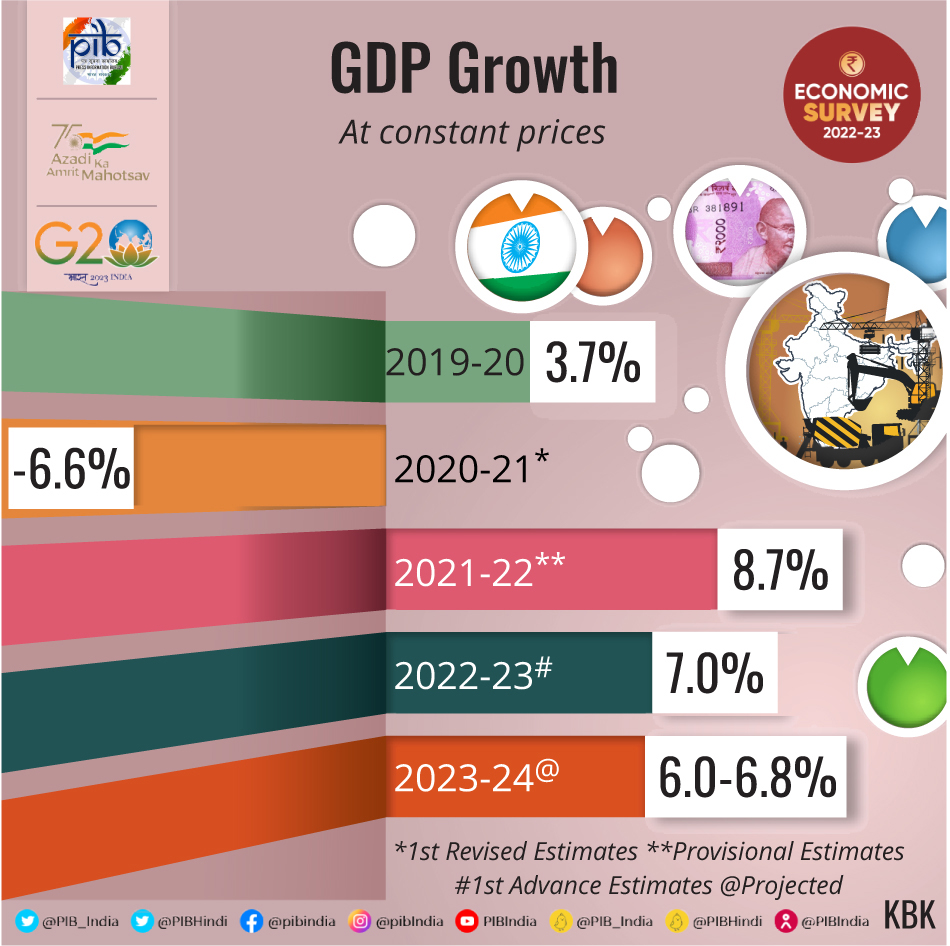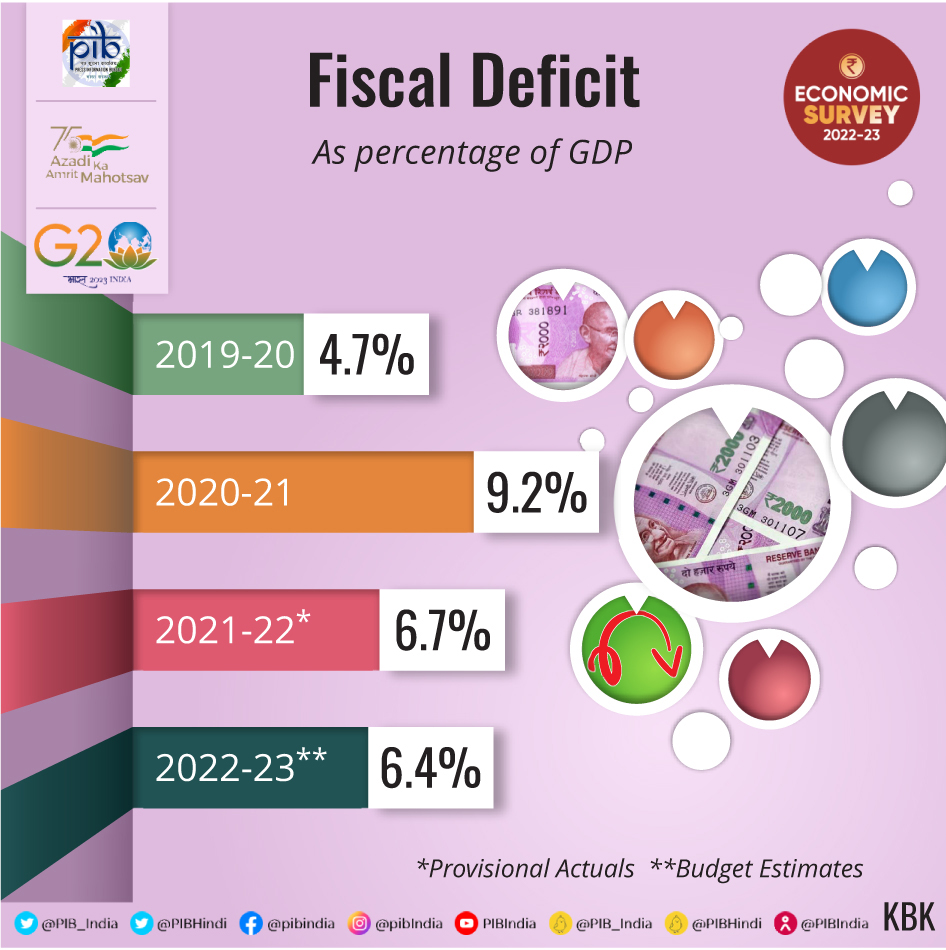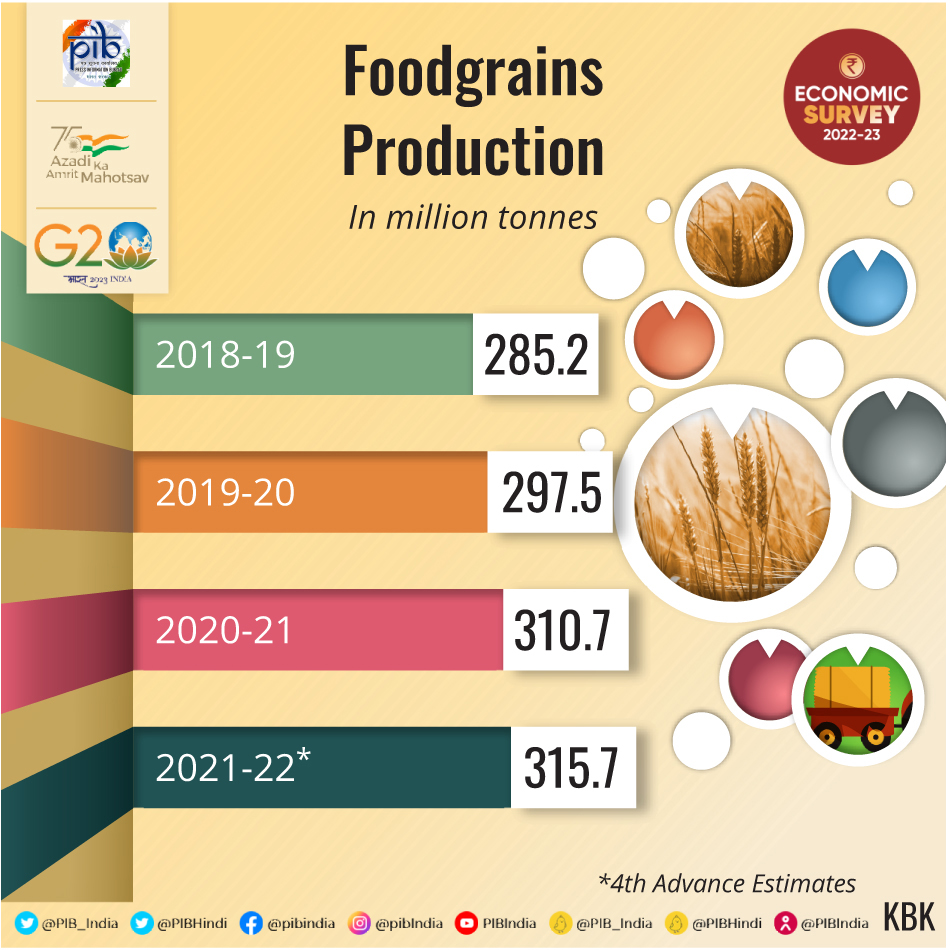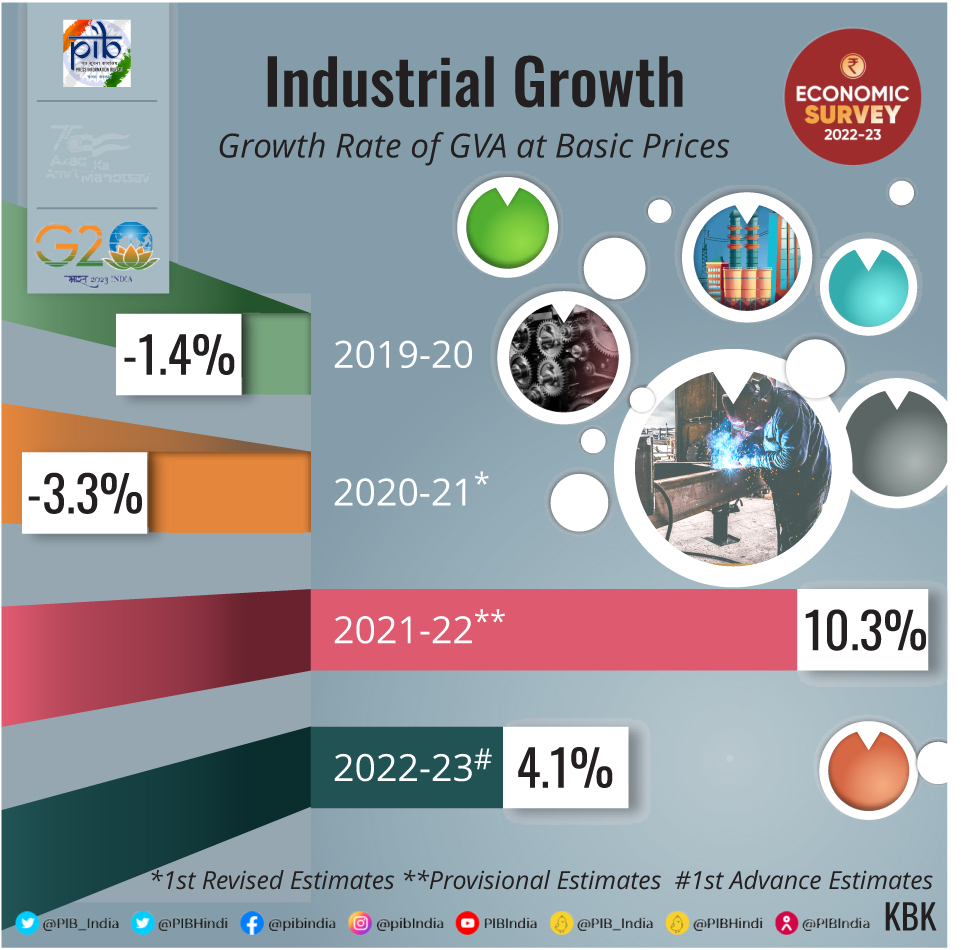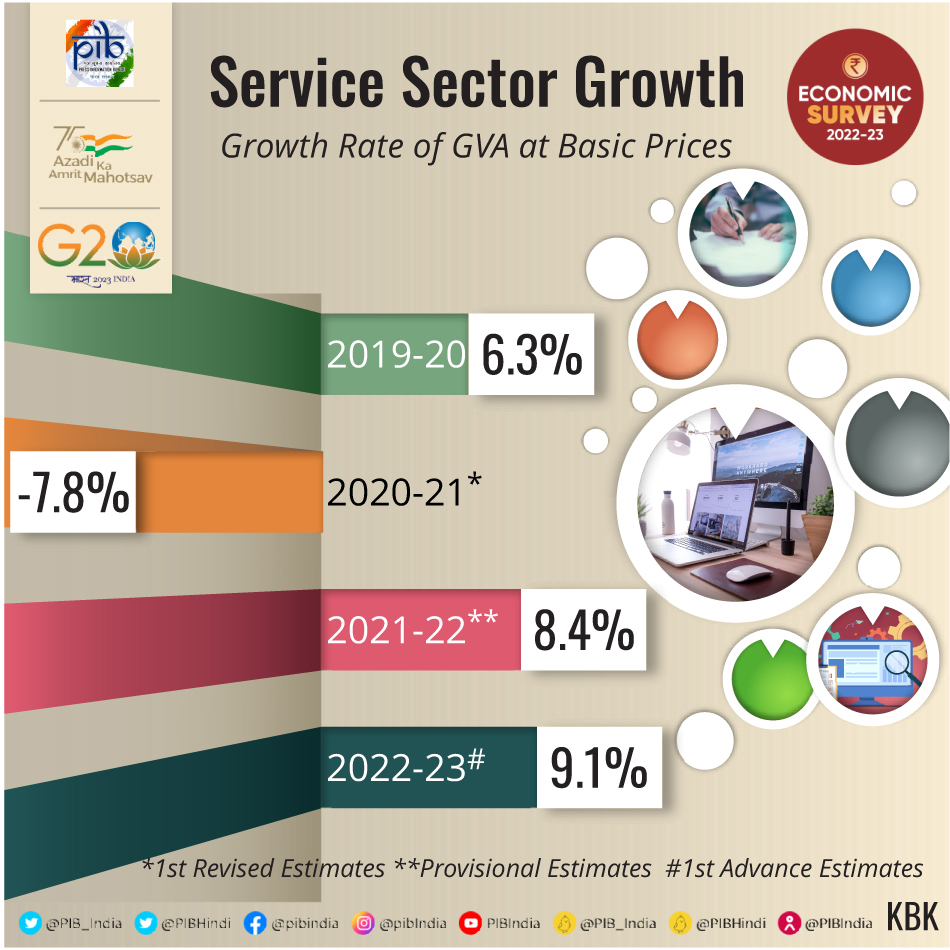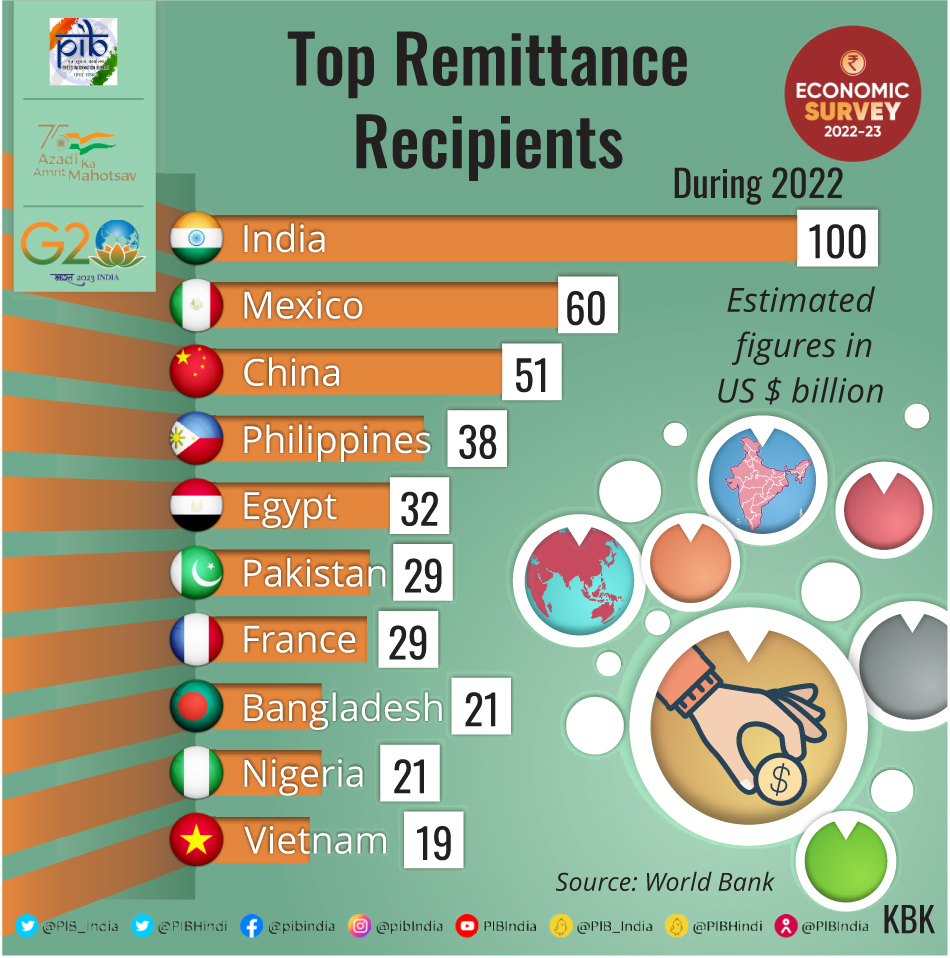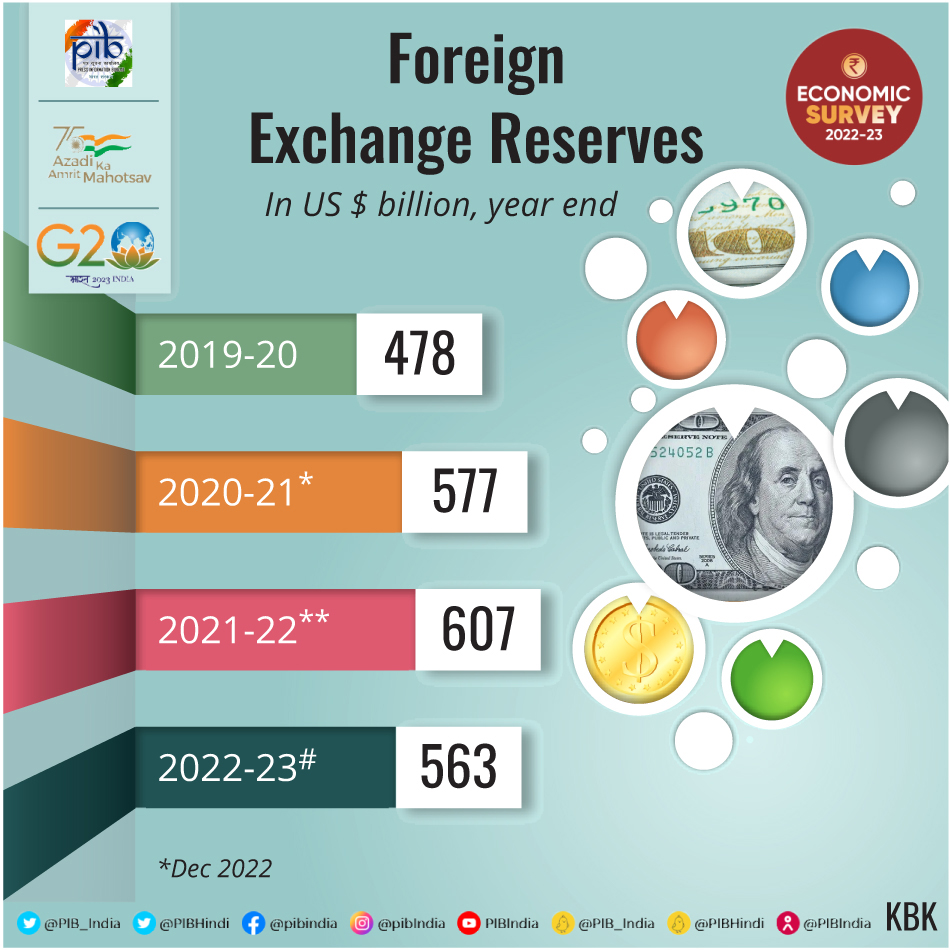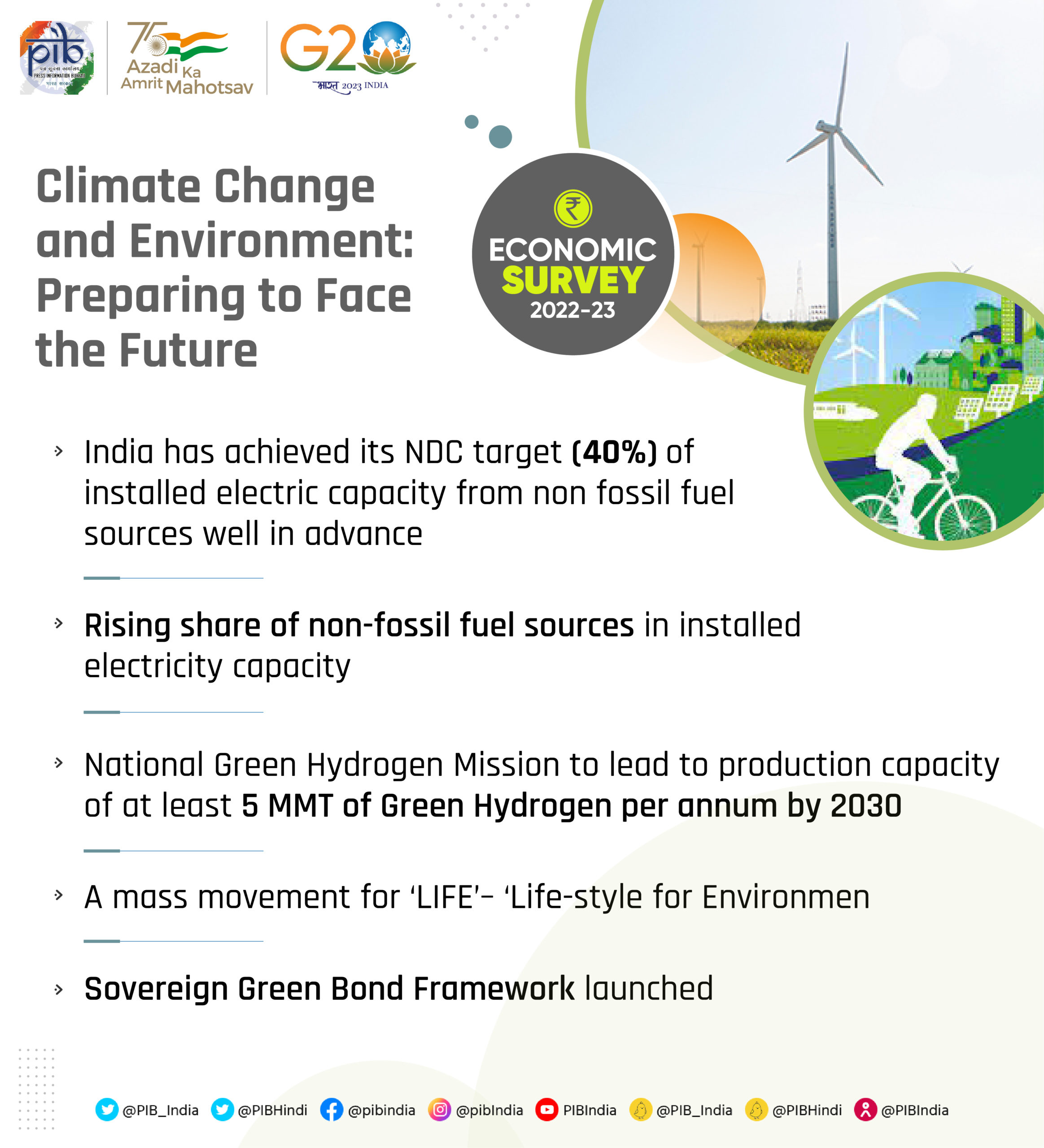ForumIAS announcing GS Foundation Program for UPSC CSE 2025-26 from 19 April. Click Here for more information.
Contents
| For 7PM Editorial Archives click HERE → |
Introduction
The Economic Survey 2022-23 was tabled in the Parliament by the Union Finance Minister on January 31, 2023. The document has been prepared by the Economic Division of the Department of Economic Affairs (DEA). The Survey provides a detailed report of the national economy for the year along with forecasts. It touches upon everything from agriculture to unemployment to infrastructure. The comments, recommendation or policy solutions contained in the Survey are not binding on the Government. The document projects a baseline GDP growth of 6.5% in real terms in FY2023-24. The projection is broadly comparable to the estimates provided by multilateral agencies such as the World Bank, the IMF, the ADB etc. Growth is expected to be brisk in FY2023-24 driven by increased credit (loan) disbursal by banks and pick-up in investments. Further support to economic growth will come from the expansion of public digital platforms and path-breaking measures such as PM GatiShakti, the National Logistics Policy, and the Production-Linked Incentive schemes to boost manufacturing output.
Key Highlights of the Economic Survey 2022-23
GDP Projections: In real terms, the economy is expected to grow at 7% for the year ending March 2023. (FY2022-23). This follows an 8.7% growth in the previous financial year, FY2021-22. The baseline GDP growth for 2023-24 has been projected at 6.5% in real terms. The survey has projected growth will be between 6.0%-6.8%, depending on the trajectory of economic and political developments globally.
India’s growth outlook arises from : (a) Limited health and economic fallout for the rest of the world from the recent surge in COVID-19 infections in China and, therefore, continued normalisation of supply chains; (b) Inflationary impulses from the reopening of China’s economy turning out to be neither significant nor persistent; (c) Recessionary tendencies in major Advanced Economies (AEs) triggering a cessation of monetary tightening and a return of capital flows to India amidst a stable domestic inflation rate below 6% (i.e., possibility of recession in developed countries has made their Central Banks (including US Fed) to slow down/stop the interest rate hikes, which will increase capital flow into India). This has improved investment sentiment in India.
Source: PIB
Inflation: India’s retail inflation rate peaked at 7.8% in April 2022, above the Reserve Bank of India’s (RBI) upper tolerance limit of 6%. Yet it was one of the lowest in the world. The inflation could be controlled through RBI’s measured actions of calibrated interest rate hikes and controlling inflation expectations through regular communication.
Source: PIB
Fiscal Developments: The Government’s finances showed a resilient performance during the year, aided by the recovery in economic activity, buoyancy in revenues from direct taxes and goods and services tax (GST). The gross tax revenue registered a year-on-year growth of 15.5% from April to November 2022, driven by robust growth in the direct taxes and GST. GST stabilised as a vital revenue source for the Union and State Governments, with gross GST collections increasing 24.8% on a year-on-year basis from April to December 2022.
The Government’s emphasis on Capital Expenditure (Capex) continued despite higher revenue expenditure requirements during the year. The Centre’s capex rose from a long-term average of 1.7% of GDP (FY2008-09 to FY2019-20) to 2.5% of GDP in FY2021-22. Budgeted capital expenditure has risen 2.7 times in the last 7 years, from FY2015-16 to FY2022-23, re-invigorating the Capex cycle. The Government’s capex-led growth strategy will enable India to keep the growth-interest rate differential positive, leading to a sustainable debt to GDP ratio in the medium run.
Despite capex push, the Government has been able to restrict fiscal deficit to the budgeted 6.4% of the GDP.
Source: PIB
Monetary Management: The Economic Survey 2022-23 observes that Monetary tightening by the RBI since April 2022 has led to a moderation of surplus liquidity conditions. The growth in credit off take is expected to sustain, and combined with a pick-up in private capex, will usher in a virtuous investment cycle (i.e. credit (loans) taken by corporate/private sector is rising, which is expected to boost investment in the economy). Credit disbursed by non-banking financial companies has also been on the rise. The gross non-performing assets ratio of scheduled commercial banks fell to a seven-year low of 5.0%.
Social Infrastructure and Employment: Government spending on the social sector witnessed a significant increase from INR 9.1 lakh crore in 2015-16 to INR 21.3 lakh crore in 2022-23. The Union and State Governments’ budgeted expenditure on the health sector touched 2.1% of GDP in 2022-23 in the budget estimate and 2.2% in 2021-22 in the revised estimate.
The JAM Trinity (Jan-Dhan, Aadhaar and Mobile), combined with Direct Benefit Transfers (DBT), has brought the marginalised sections of society into the formal financial system, revolutionising the path of transparent and accountable governance by empowering the people. Aadhaar played a vital role in developing the CoWIN platform and in the transparent administration of over 2 billion vaccine doses. Due to several steps taken by the government on health, out-of-pocket expenditure as a percentage of total health expenditure declined from 64.2% in 2013-14 to 48.2% in 2018-19.
Source: PIB
Labour markets recovered beyond pre-Covid levels, in both urban and rural areas, with unemployment rates falling from 5.8% in 2018-19 to 4.2% in 2020-21.
Source: PIB
Agriculture and Food Management: The performance of the agriculture and allied sector has been buoyant over the past several years, due to the measures taken by the government to augment crop and livestock productivity, ensure certainty of returns to farmers through price support, promote crop diversification, improve market infrastructure through the impetus provided for the setting up of farmer-producer organisations and promotion of investment in infrastructure facilities through the Agriculture Infrastructure Fund.
Source: PIB
According to the Economic Survey 2022-23, Private investment in agriculture rose to 9.3% in 2020-21. Institutional credit to the agricultural sector continued to grow to INR 18.6 lakh crore in 2021-22. The minimum support price for all mandated crops was fixed at 1.5 times of the all-India weighted average cost of production from 2018. Food grain production in India saw sustained increase and stood at 315.7 million tonnes in 2021-22.
Source: PIB
Industry: Overall gross value added by the industrial sector (for the first half of 2022-23) rose 3.7%, which is higher than the average growth of 2.8% achieved in the first half of the last decade. Robust growth in private final consumption expenditure, export stimulus during the first half of the year, increase in investment demand triggered by enhanced public capex and strengthened bank and corporate balance sheets provided a demand stimulus to industrial growth.
Credit to micro, small and medium enterprises(MSME) has grown by an average of around 30% since January 2022 and credit to large industry has grown in double digits since October 2022. Electronics exports rose nearly threefold, from US$ 4.4 billion in 2018-19 to US$ 11.6 billion in 2021-22. India became the second-largest mobile phone manufacturer globally, with the production of handsets rising to 29 crore units in 2020-21 from 6 crore units in 2014-15.
The production-linked incentive (PLI) schemes were introduced across 14 categories, with an estimated capex of INR 4 lakh crore over the next five years, to plug India into global supply Investment of INR 47,500 crores has been seen under the PLI schemes in 2021-22, which is 106% of the designated target for the year.
Source: PIB
Services: The services sector is expected to grow at 9.1% in 2022-23, as against 8.4% in 2021-22. India was among the top ten services exporting countries in 2021, with its share in world commercial services exports increasing from 3% in 2015 to 4% in 2021.
Contact-intensive services are set to reclaim pre-pandemic-level growth rates in 2022-23. Hotel occupancy rates have improved from 30-32%t in April 2021 to 68-70% in November 2022. The tourism sector is showing signs of revival, with foreign tourist arrivals in India growing month-on-month. Sustained growth in the real estate sector is taking housing sales to pre-pandemic levels, with a 50% rise between 2021 and 2022. India’s e-commerce market is projected to grow at 18% annually through 2025.
Source: PIB
External sector: Merchandise exports were $332.8 billion for April-December 2022. India has diversified its markets and increased its exports to Brazil, South Africa and Saudi Arabia. India has entered into a Comprehensive Economic Partnership Agreement with the United Arab Emirates and an Economic Cooperation and Trade Agreement with Australia in 2022.
India continued to be the largest recipient of remittances in the world, netting $100 billion in 2022. Remittances are the second-largest major source of external financing after service exports.
Source: PIB
As of December 2022, forex reserves stood at $563 billion covering 9.3 months of imports. As of end-November 2022, India was the sixth-largest foreign exchange reserves holder in the world.
Source: PIB
Climate Change and the Environment: The Economic Survey 2022-23 points out that the global nature of the problem makes India one of the most vulnerable regions despite having contributed only about 4% in the cumulative global emissions (for the period 1850-2019) and maintaining its per capita emission at far less than the world average.
India has integrated the development goals with ambitious climate action goals, be it in the form of augmented solar power capacity (installed), higher energy saving targeting notified in PAT cycle-VII, improved green cover facilitated by Green India Mission, among other targeted Government actions.
In August 2022, the country updated the Nationally Determined Contributions (NDCs) in line with the PM’s vision expressed in the 26th meeting of the Conference of Parties of UNFCCC.
The National Hydrogen Mission and Green Hydrogen Policy have been introduced to enable India to be energy independent by 2047. Its pivotal role is also reflected in India’s Long Term Low Emissions Development Strategy (LT-LEDS).
Source: PIB
Other details mentioned in the Economic Survey 2022-23
Proceeds from Disinvestment: In the last 9 years, approximately INR 4.07 lakh crore have been realised as disinvestment proceeds, and after 2014, the government is engaging with the private sector as a co-partner in development. As of January 2023, 48% or more than INR 31,000 crore of the budgeted amount of INR 65,000 crore had been collected.
Cryptos not Financial Assets: The Economic Survey 2022-23 has noted that cryptocurrencies have no intrinsic cashflows and that the FTX collapse highlights their risks. The Survey has noted that, “The recent collapse of the crypto exchange FTX and the ensuing crypto market sell-off have placed a spotlight on the vulnerabilities in the crypto ecosystem.” Crypto assets are “self-referential instruments” without intrinsic cashflows and therefore not financial assets. US regulators have disqualified Bitcoin, Ether, and other crypto assets as securities.
Six challenges faced by the Global Economy
First, As noted by the WHO, COVID-19 pandemic is not over yet and the world is vulnerable to disruption in the economies due to an unanticipated wave and surge in cases.
Second, Russian-Ukraine conflict has caused an adverse impact on global economy with disruption in supply chains, mainly of food, fuel and fertilizers. Prolonged war will increase the uncertainties.
Third, The Central Banks across economies led by the US Federal Reserve have responded with synchronised policy rate hikes to curb inflation. This has lead to appreciation of US Dollar and the widening of the Current Account Deficits (CAD) in net importing economies. The possibility of recession has prompted the Banks to slow down the rate hike process, yet there are uncertainties of capital outflow should interest rates rise.
Fourth, Another challenge has emerged with the prospects of global stagflation. Developed economies, feeling compelled to protect their respective economic space, have been slowing cross-border trade affecting overall growth.
Fifth, China has experienced a considerable slowdown due to its policies. Slowdown in Chinese economy will have global repercussions, because of its impact on Chinese exports and imports.
Sixth, The impact of pandemic will pose a medium-term challenges due to loss of education and income-earning opportunities.
These challenges can have a direct and indirect impact on the Indian Economy.
Syllabus: GS III, Indian Economy
Source: Indian Express, PIB, MoneyControl, The Times of India, Business Standard

